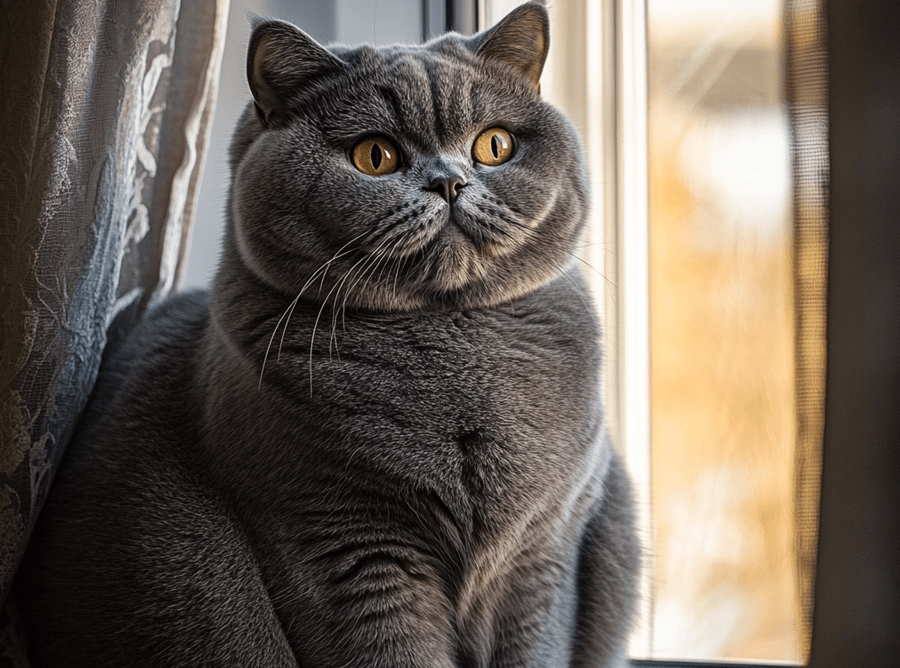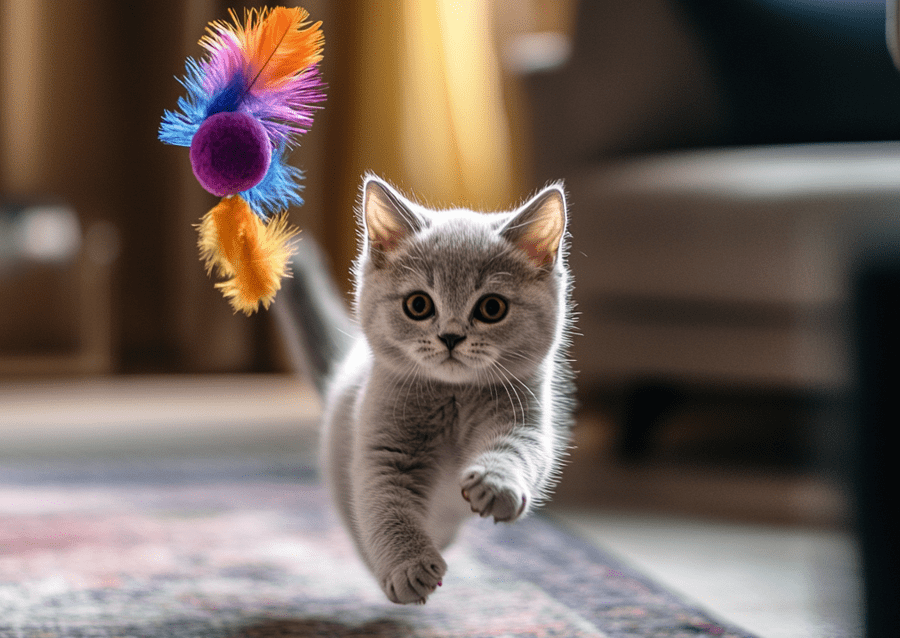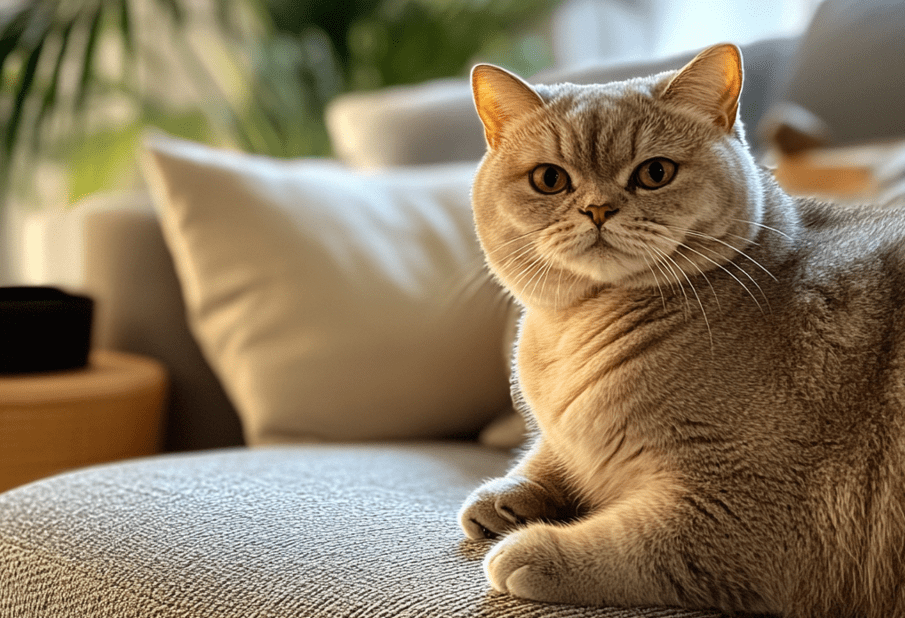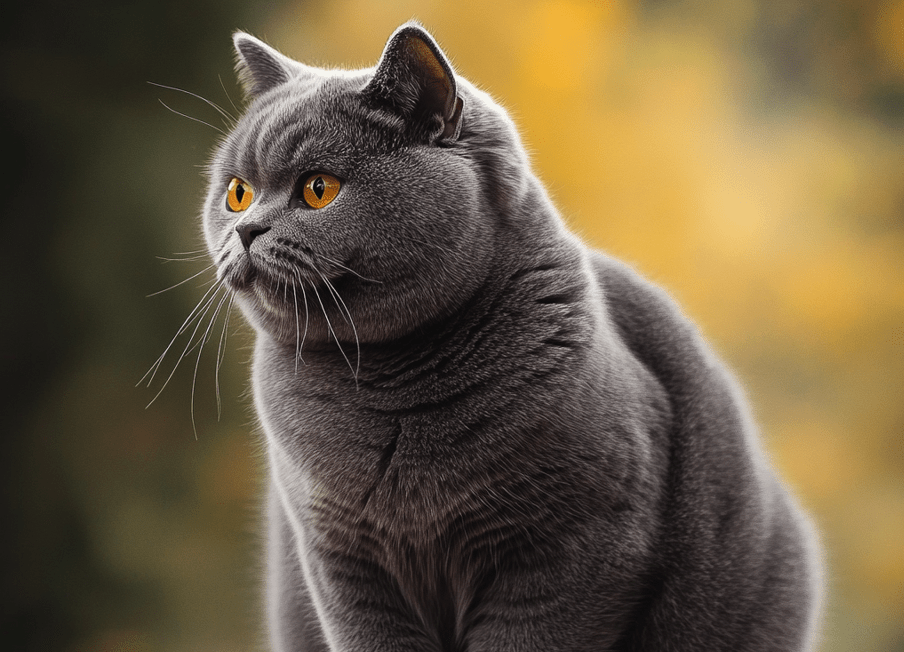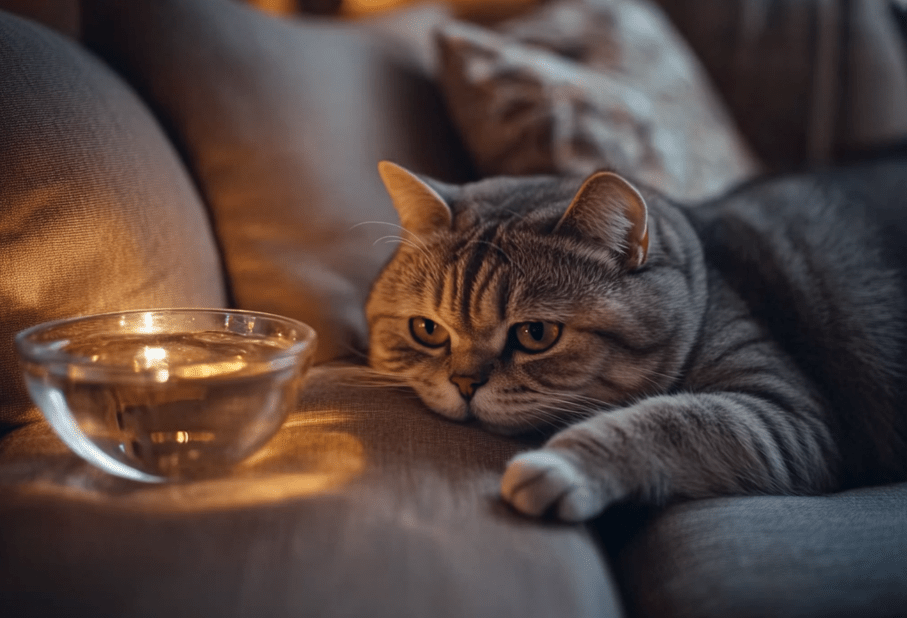
Understanding British Shorthair cat health problems is essential for ensuring the well-being and longevity of this beloved feline breed. The British Shorthair is known for its quiet temperament, and its plush and dense coat comes in several colors and patterns. If you happen to own one of these delightful felines, chances are you know exactly how special they are.
To assist with the care of your furry friend, we’ve compiled a list of the most prevalent health concerns among British Shorthairs. Understanding these can help you monitor your cat’s health and take steps to prevent serious illness.
To watch the summary of this article, just watch this video –
Health Problems in British Shorthair Cats: Polycystic Kidney Disease (PKD)
PKD (Polycystic Kidney Disease):
The Polycystic Kidney Disease is quite common in British Shorthair cats, which are bred with Persian cats because of this disease. This hereditary condition causes numerous fluid-filled cysts to develop in the kidneys. These cysts develop from birth and gradually become larger, interfering with kidney function as the cat’s age.
Of course, PKD is a slow-progressing disease and affected cats usually don’t develop symptoms until approximately 7 years of age and only once kidney function has started to decline.
Signs of PKD Include:
1.Excessive thirst
2.Frequent urination
3.Nausea and vomiting
4.Reduced appetite
5.Weight loss
6.Lethargy
7.Blood in the urine
If your British Shorthair shows any of these signs, you should contact a vet as soon as possible. A vet can run a genetic test to diagnose PKD. If the diagnosis is positive, they may suggest dietary changes or prescribe medications that can alleviate symptoms and assist the kidneys in both functioning and curtailing excess damage.
Hypertrophic Cardiomyopathy (HCM) in British Shorthairs
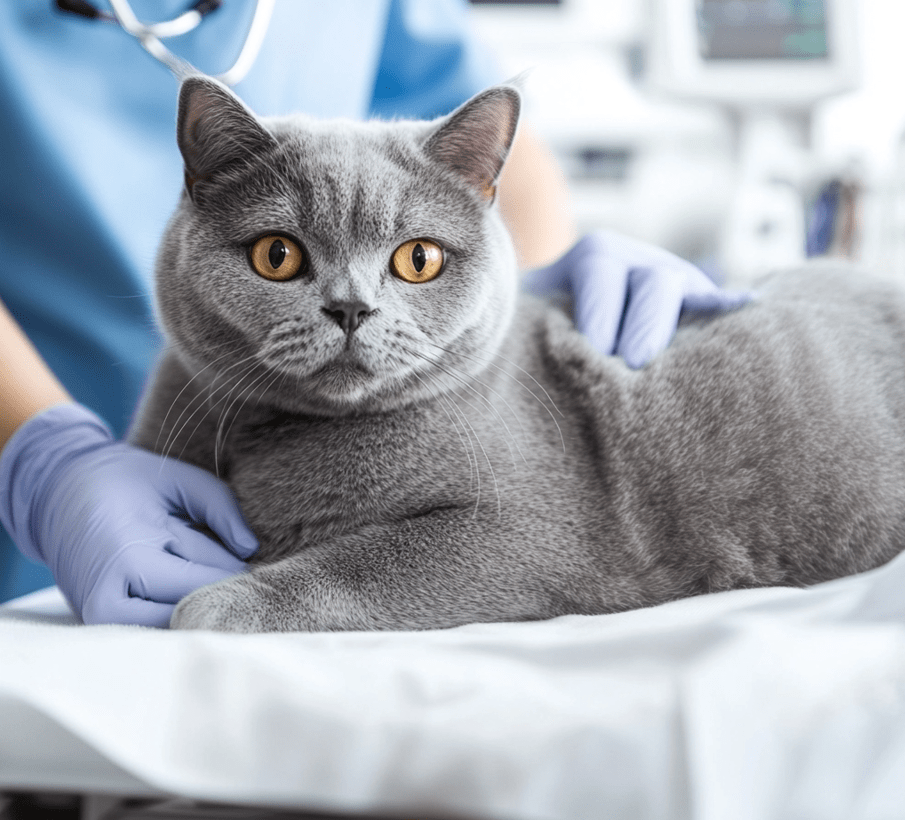
Hyperthyroid cardiomyopathy (HCM) is also a heart disease that is known in British Shorthair cats in which the walls of the heart become thickened, making the organ less efficient. In cats with HCM, the heart may beat at an abnormally rapid rate, intensifying its oxygen requirements. This increased activity can cause heart cells to die, compromising the heart’s ability to function. This can lead to complications, including the formation of blood clots or congestive heart failure.
However, it does not mean that all cats with HCM will show symptoms. Some will appear well, while others will exhibit signs of congestive heart failure from fluid in the lungs.
Common Symptoms of HCM:
1.Rapid breathing
2.Open-mouth breathing
3.Lethargy
4.Loss of appetite
5.Elevated heart rate
6.Sudden paralysis of the hind legs
If you think your cat has HCM, you need to get veterinary care as soon as possible. A veterinarian will usually employ echocardiography to look for thickened walls of the heart and check blood flow. If no specialized equipment is available, your vet may refer you to a veterinary cardiologist.
Arterial Thromboembolism (ATE)
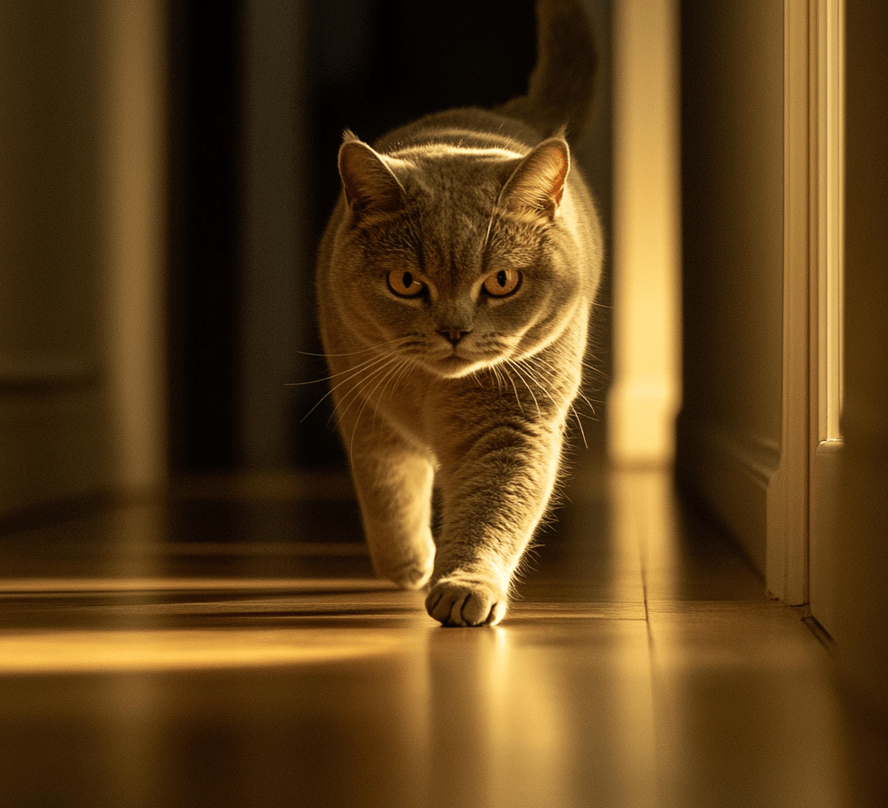
Blood clots can form in the coronary arteries as a result of a heart condition in British Shorthair cats, which can therefore develop arterial thromboembolism. These clots typically get stuck close to the aorta, blocking blood flow to a cat’s hind legs. In this instance, the legs affected may feel cold, be painful or lose mobility.
Thromboembolism of the arteries proceeds quickly and can be life threatening for a cat, necessitating prompt veterinary care. Cats that survive the condition, if treated promptly, generally regain full function of their legs.
Signs and Symptoms of Arterial Thromboembolism
1.Hind leg paralysis
2.Vocalizing in pain
3.Difficulty walking
If your British Shorthair suddenly displays hind leg weakness or paralysis, increased vocalization, or difficulty walking, get it to the veterinarian immediately. To determine whether there are indeed blood clots in the heart, a complete checkup may include X- ray, electrocardiogram (ECG) or echocardiogram.
This is treated with anticoagulant medications that dissolve the clot and restore blood flow. Unfortunately, if a cat is unresponsive to treatment, humane euthanasia can be performed to end his or her suffering.
While there is no current cure for hypertrophic cardiomyopathy, treatment can help you manage the disease. Medications can be prescribed to help regulate the heart rate, decrease the amount of fluid in the lungs, and reduce the risk of blood clots forming, so your cat can live a better quality of life.
Peritoneal-Pericardial Diaphragmatic Hernia (PPDH)
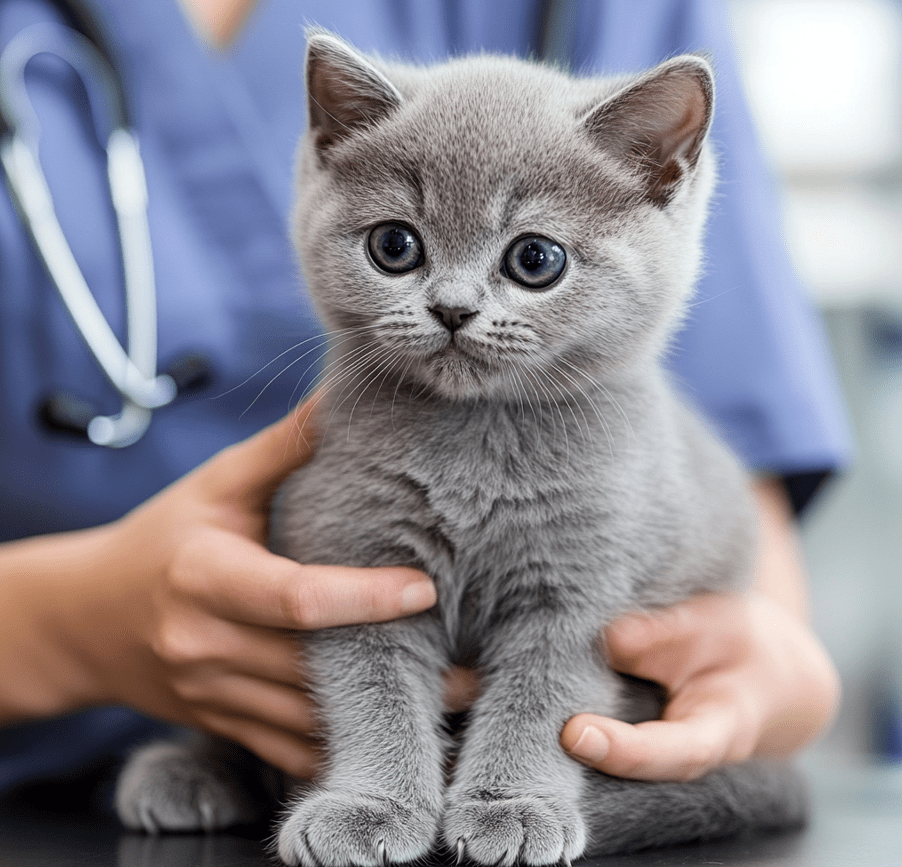
British Shorthairs may suffer from a rare congenital disorder known as peritoneal-pericardial diaphragmatic hernia (PPDH). That happens when the fetal diaphragm doesn’t form correctly, leading to a tear that lets abdominal organs like the stomach, liver and intestines move into the chest cavity. Older cats are less prone to develop PPDH as it most often occurs during kittenhood, although trauma can draw the condition out.
This hernia can raise pressure inside the abdominal cavity, compress the lungs, limit the ability to breathe and create other problems. Sometimes a blow to the abdomen, falling or a car crash can explain PPDH caused by blunt-force trauma.
Symptoms of PPDH:
1.Muffled heartbeat
2.Breathing difficulties
3.Vomiting
4.Distress
5.Abnormal breathing posture (extended head and neck)
If you see these symptoms in your cat and suspect she has PPDH, get her to an emergency veterinarian right away. Diagnosis can be confirmed via chest X-rays, abdominal & thoracic ultrasonography, or CT scans.
Most patients are treated by surgically repairing the diaphragm. In cases where blood flow to organs such as the liver, spleen or intestines has been disrupted, some of the affected tissue may need to be removed. The good news is that successful treatment of PPDH usually allows cats to make a full recovery.
Obesity in Cats
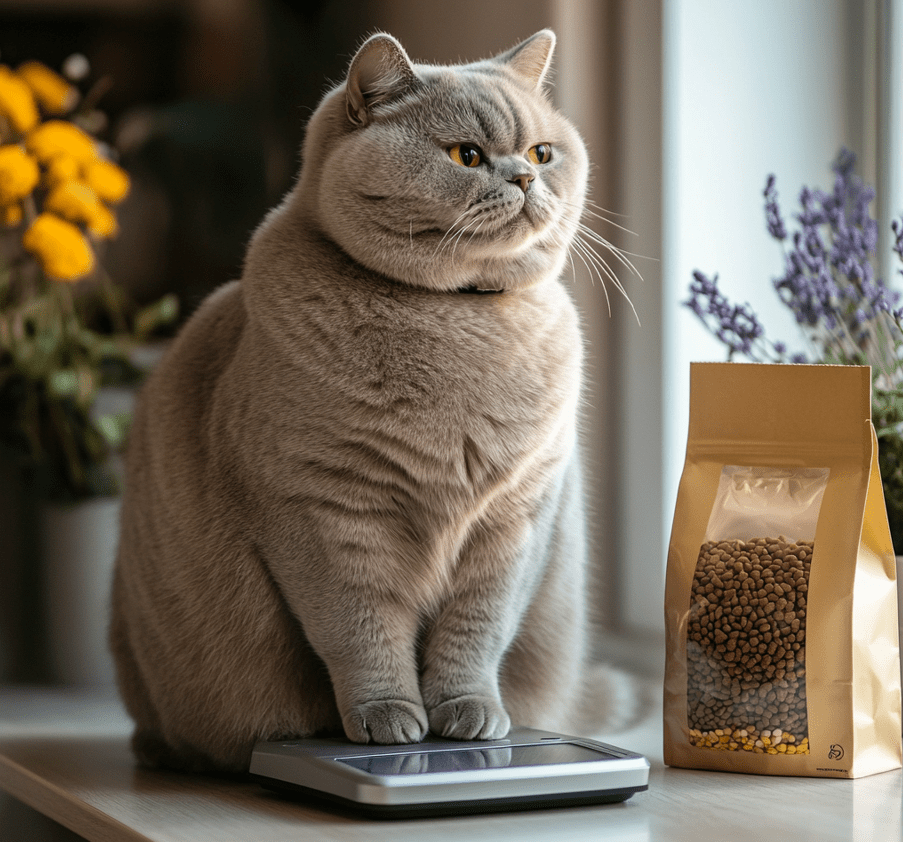
Obesity is more likely seen in neutered male cats, older cats and those fed unbalanced diets. As a guide, a healthy weight for a British Shorthair cat is usually between 15 and 17 pounds.” Cats in excess of 17 pounds are classified as obese, and they risk serious health problems, including heart disease and diabetes. The good news is that feline obesity is preventable and treatable.
Signs of Feline Obesity:
1.A distinct protrusion at the base of the tail
2.No visible waist from above
3.Not being able to feel the ribs or spine through touch
4.Increased lethargy
Maintenance and Prevention of Obesity
If you have an overweight or obese cat, first set a structured feeding schedule, and follow the feeding guidelines on the food packaging. They may also help you lose weight, and switching to a weight-control cat food can help — ask your veterinarian if that’s a good option for your cat. Promote exercise by getting him a cat tree or activity center to help him work off energy every day.
Following these tips can help your cat stay at a healthy weight and prevent potential obesity-related health problems.
How to Ensure Your British Shorthair Stays Healthy
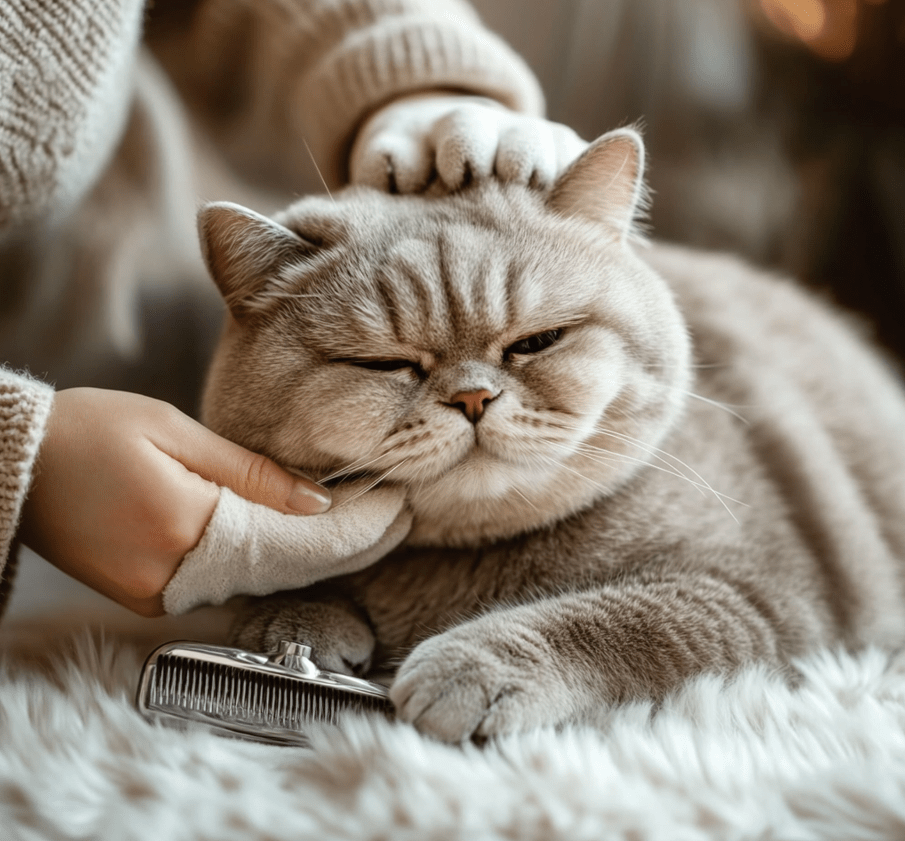
Your British Shorthair needs the right care to be fit and healthy. Instead, there are some things you can do to try to keep your feline friend healthy, even if you can’t protect them from all health problems. Here are some well-known tricks for retaining a long and healthy existence for your British Shorthair:
Regular Grooming and Nail Maintenance
The British Short Hair thick, dense coat should be brushed several times a week to prevent hairballs and keep their coat healthy by distributing the natural oils in their coat. Invest in a nice cat brush or grooming gloves to make it fun and effective.
Also, every four weeks file your cat’s claws using a nail grinder or clippers. It helps prevent broken or torn nails, and it keeps your furniture and skin safe from accidental scratches.
Provide Nutritious Food
Do not compromise on the quality of cat food; it should have all the necessary nutrients required for your British Shorthair. Although premium cat food comes at a higher price, it supports your pet’s general health and helps to avoid diet-related health issues.
Dietary Restrictions and Treats
Provide your adult cat with at least two meals per day, about 12 hours apart, and a complete guide to the amount of food to give your cat can be found on your bag of cat food packaging. Being prone to obesity, British Shorthairs should not be overindulged with treats. Avoid giving them treats every day, aiming to keep them at their ideal weight.
Be Alert About Health Problems
Though the British Shorthair is generally a healthy breed, it is not immune from health issues. If you notice strange behavior or symptoms, immediately consult your vet to rule out any issues.
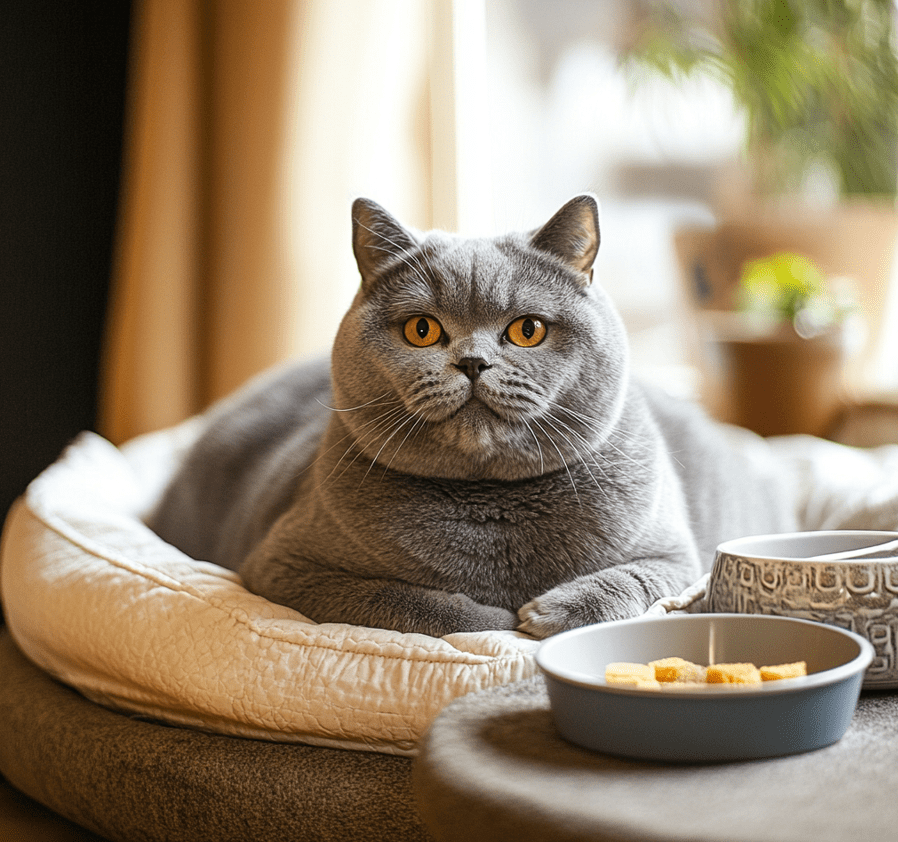
In conclusion, if you follow basic care and a healthy routine, your British Shorthair will have a long and pleasant life! Given the proper grooming, a nutritious diet, and regular veterinary check-ups, your furry friend will be by your side for years to come.

